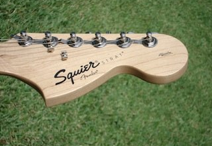Here’s an interesting little circuit for your entertainment. It’s another one of my so-called reInventions, something that I dreamed up and tested working however it most likely already exists in the prior art. I’d like to begin by sharing the creative process with you and then explain how it works.
I was participating in the electro-music.com Lunetta Challenge in which we each purchase a grab bag of 4000 series CMOS chips from Electronics Goldmine and then create whatever fun Lunetta circuit we can from the chips provided – and only those chips.
The first thing I needed was an oscillator and I was given no Schmidt trigger parts so I could not use a classic single-gate oscillator. I could have looked up an existing circuit but that is not my way, I’d rather imagineer something if only for the fun of enjoying the creative process.
My thoughts turned to the familiar Set-Rest Flip-Flop. Formed from either NAND gates or NOR gates in a cross-coupled configuration, an SRFF is kind of like a two-input pulsed inverter thingie in a way. Applying a pulse to the Set input gives you a 1 output on Q and a 0 output on Q-, then applying a pulse to the Reset input toggles the outputs. So we have two pulsed inputs and two latched outputs that invert in response to the inputs.
Going with the notion of the SRFF being a sort of dual inverter circuit, I wondered how I could make this thing oscillate. The critical elements of this type of oscillator are an inverting device and an RC feedback circuit, and here we have a dual thing, so maybe I could use two RC filters in feedback to do the job.
Well there were two open inputs so I could see where to feed back the RC circuits, and just sort of graphically I imagined the input connections to the RC circuits from the Q and Q- outputs, as shown in the schematic above. I wired up the circuit on a breadboard and surprise – it worked!
Actually the potentiometer in the circuit above is a later addition which provides a limited degree of frequency control. For a fixed frequency oscillator just use a resistor there of equal value to the other resistor. For full and symmetrical frequency control, use a dual ganged potentiometer.
The circuit has some interesting properties which you may find useful sometime. It provides a clock and the inversion of that clock simultaneously, it offers duty cycle control by adjustment of the RC time constants, and it uses only half of a 4011 NAND chip, providing two free gates for other purposes. Also the circuit works with 4001 NOR gate chips as well.
I guess that’s about all I can say about this interesting little CMOS creation. You may choose to add it to your arsenal of music making circuitry or just enjoy reading this article for whatever it’s worth.
The most important thing I hope to leave you with is another example of the creative process – imagineering circuits like this is really kind of like an art form and be you an expert or a beginner, it’s something that you can do yourself. So go forth and create! It’s fun and surprisingly satisfying so I say go for it!



